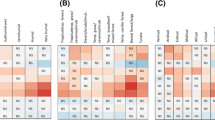Summary
Soils derived from a number of different parent materials (lithologies) and developed along a climatic gradient, manifested by the altitudinal succession of natural vegetation zones (Mediterranean, sub-Mediterranean, Mountainous and Pseudoalpine), were sampled throughout mainland Greece.
In soils derived from siliceous parent materials low in clay, acidity increase and percent base saturation decreases from the Mediterranean to the Pseudoalpine vegetation zones. Clay illuviation is found mainly in soils developed in the Mediterranean and the sub-Mediterranean zones. No such changes are apparent in clayey soils rich in bases.
Organic matter content of the mineral portion of the soil profile increases by a factor of 2 with a decrease in mean annual air temperature of about 10°C. The pattern of change in clay and soil organic matter content with climate is in relatively good agreement with soil development trends in the area, when soil profiles are named according to the FAO-Unesco soil map of the world.
Concentrations of Ca and Mg decrease and those of total N, total and extractable P, K, Fe, Mn and Zn increase from the Mediterranean to the Mountainous zone. Within the same zone, however, concentrations of N, Ca, K, Fe, Mn and Zn decrease, but those of Mg, total and extractable P increase with soil depth. The concentrations of most macro- and micronutrients in the humic horizon are several times higher than those in the mineral portion of the soil profile due to biological enrichment.
Similar content being viewed by others
References
Apostolakis C G and Douka C E 1970 Distribution of macro- and micronutrients in soil profiles developed on lithosequences and biosequences in Northern Greece. Soil Sci. Soc. Am. Proc. 34, 290–296.
Berrow M L and Michell R L 1980 Location of trace elements in soil profiles: total and extractable contents of individual horizons. Trans. Royal Soc. Edinburgh: Earth Sci. 71, 103–121.
Birch H F and Friend M T 1956 The organic-matter and nitrogen status of East African soils. J. Soil Sci. 7, 156–167.
Bleak A T 1970 Disappearance of plant litter under a winter snow cover. Ecology 51, 915–917.
Bray R H and Kurtz L T 1945 Determination of total, organic and available forms of phosphorus in soils. Soil Sci. 59, 39–45.
Bouyoucos G J 1951 A recalibration of the hydrometer method of making mechanical analysis of soils. Agron. J. 43, 434–437.
Bower C A, Reitemeier R F and Fireman M 1952 Exchangeable cation analysis of saline and alkaline soils. Soil Sci. 73, 251–261.
Cortes A and Franzmeier D P 1972 Climosequence of ash-derived soils in the central Cordillera of Colombia. Soil Sci. Soc. Am. Proc. 36, 653–659.
FAO-Unesco 1974 Soil map of the world, Volume 1 Legend, 59 pp.
Follet R H and Lindsay W L 1970 Profile distribution of Zn, Fe, Mn, and Cu in Colorado soils. Colorado State Univ. Exp. Stn. Tech. Bull. 110.
Hanawalt R B and Whittaker R H 1976 Altitudinally coordinated patterns of soils and vegetation in the San Jacinto mountains, California. Soil Sci. 121, 114–124.
Hodgson J F, Geering H R and Norvell W A 1965 Micronutrient cation complexes in soil solution: partition between complexed and uncomplexed forms by solvent extraction. Soil Sci. Soc. Am. Proc. 29, 665–669.
Jenny H 1941 Factors of Soil Formation: A System of quantitative Pedology. McGrow-Hill, New York.
Leamy M L, Ludecke T E and Blakemore L C 1974 The significance to pastoral farming of a soil climosequence in central Otago. N.Z. J. Exp. Agric. 2, 321–331.
Mavrommatis G 1980 Le bioclimat de la Grèce relations entre le climat et la végétation naturelle (Cartes Bioclimatiques). For. Res. 1, 63 p (Supplement) (In Greek with summary in French).
Molloy L F and Blakemore L C 1974 Studies on a climosequence of soils in tussock grasslands. N.Z. J. Sci. 17, 233–255.
Nakos G 1979 Relationship between soil fertility and the nutritional status of the needles of conifer species. Forest Res. Institute., Publ. No 77, 19 p. (In Greek, with English summary).
Nakos G 1977 General soil map of Greece (1∶500,000).
Nakos G 1979 Forest soils of Greece: Physical, chemical and biological properties. For. Ecol. Manage. 2, 25–51.
Olson S R, Cole C V, Watanabe F S and Dean L A 1954 Estimation of available phosphorus in soils by extraction with sodium bicarbonate. U.S. Dept. Agric. Circ. 939.
Walkley A 1946 A critical examination of a rapid method for determining organic carbon in soils- effect of variations in digestion conditions and of inorganic soil constituents. Soil Sci. 63, 251–263.
Whittaker R H, Buol S W, Niering W A and Havens Y H 1968 A soil and vegetation pattern in Santa Catalina Mountains, Arizona. Soil Sci. 105, 440–450.
Author information
Authors and Affiliations
Rights and permissions
About this article
Cite this article
Nakos, G. Relationships of bio-climatic zones and lithology with various characteristics of forest soils in Greece. Plant Soil 79, 101–121 (1984). https://doi.org/10.1007/BF02182148
Received:
Revised:
Issue Date:
DOI: https://doi.org/10.1007/BF02182148




